Question
Part I: Answer the following questions 1. There are several strategies to persuade your audience. Discuss one strategy in detail and provide an example of
Part I: Answer the following questions
1. There are several strategies to persuade your audience. Discuss one strategy in detail and provide an example of how you could use this strategy to persuade someone in a business/real life situation.
2. Explain what is meant by employee right to privacy when it comes to digital communication. How does that apply to phone calls, text messages, and e-mails made through company-owned devices. Provide details and examples.
Part II: Read case study Case 7.1: "Samsung Electronics Co., Ltd" and answer the following questions:
- As the communication director for the company, what course of action would you take after the initial consumer reports of the phone's defect emerged?
- What kind of crisis management plan, if any, should Samsung develop to address similar situations in the future?
- As the communication director for the company, what course of action would you take after the initial consumer reports of the phone's defect emerged?
- How can Samsung regain the trust of its consumers once more?
- What processes or structures should Samsung establish to make sure it does not encounter these issues again?
Ref for part 2:
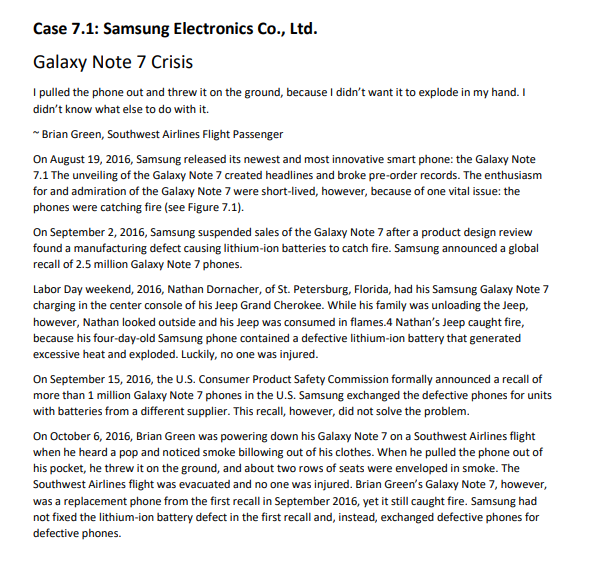
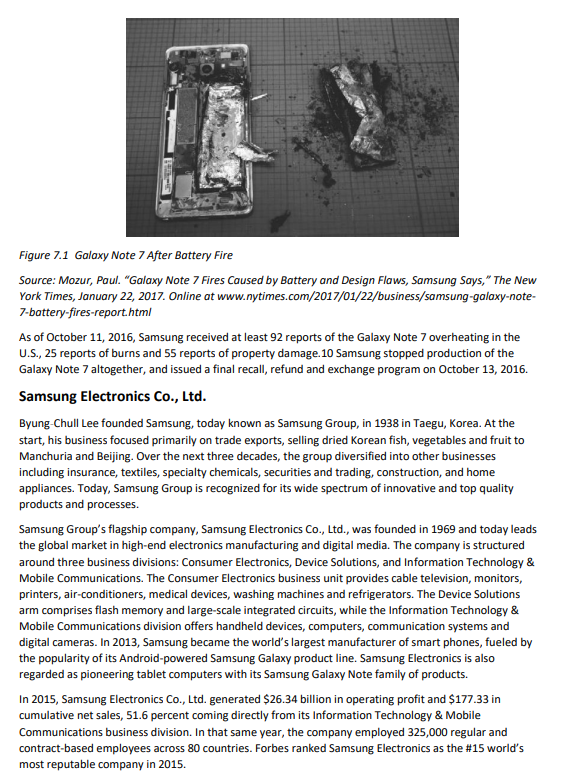
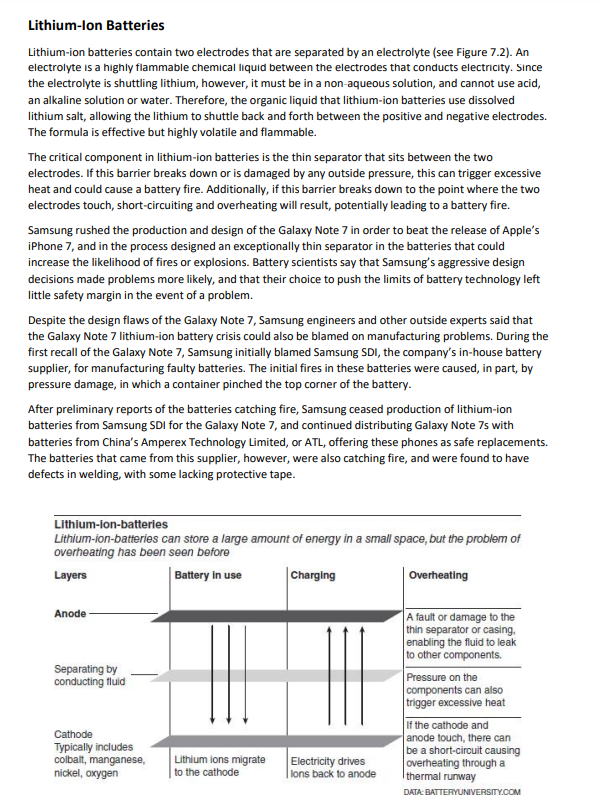
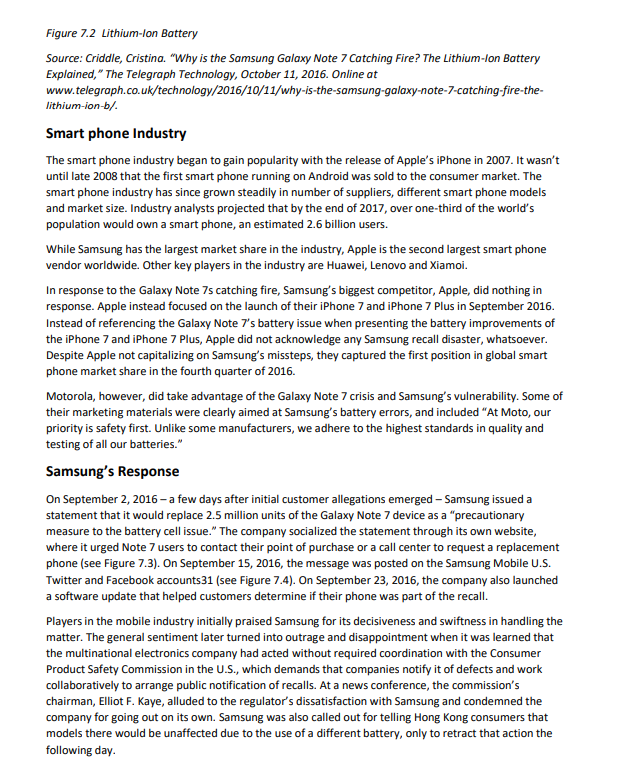
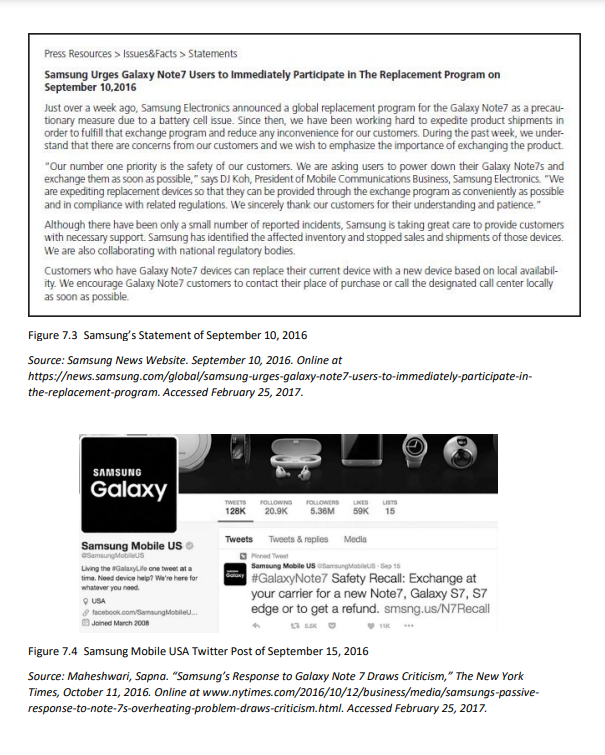
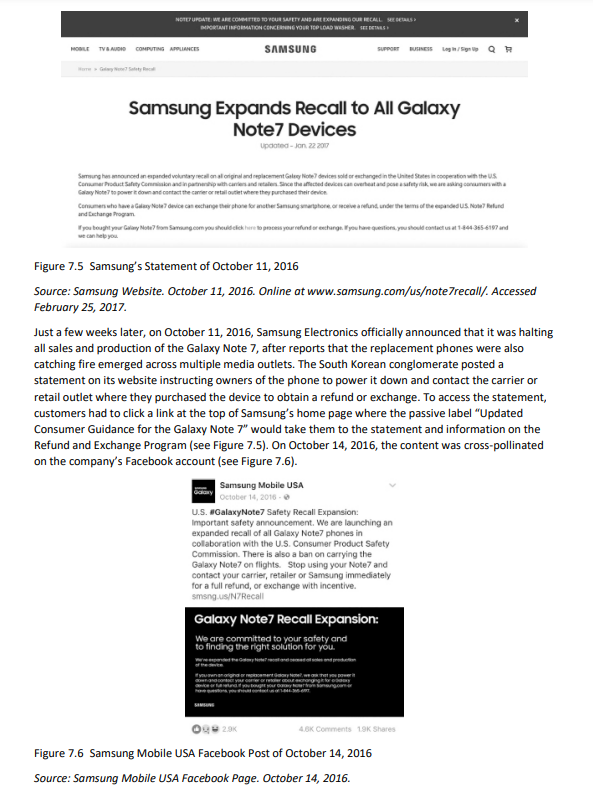
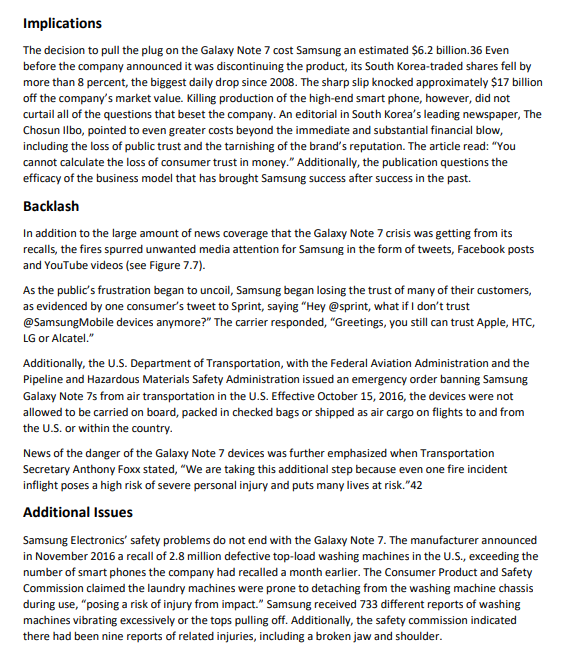
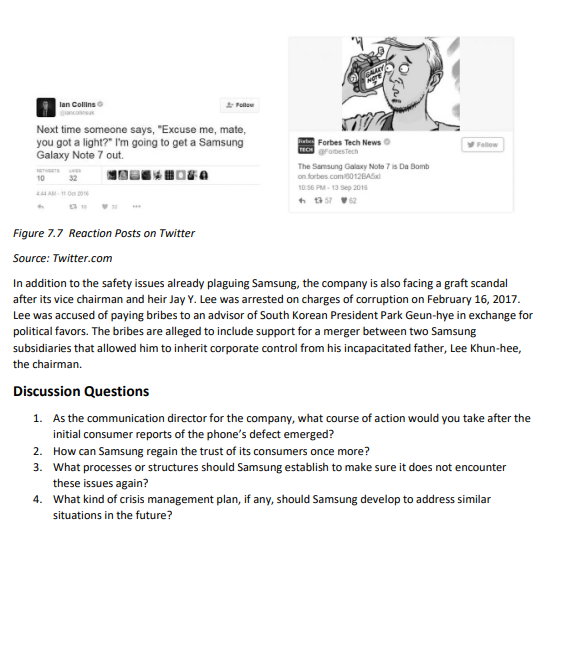
Case 7.1: Samsung Electronics Co., Ltd. Galaxy Note 7 Crisis I pulled the phone out and threw it on the ground, because I didn't want it to explode in my hand. I didn't know what else to do with it. ~Brian Green, Southwest Airlines Flight Passenger On August 19, 2016, Samsung released its newest and most innovative smart phone: the Galaxy Note 7.1 The unveiling of the Galaxy Note 7 created headlines and broke pre-order records. The enthusiasm for and admiration of the Galaxy Note 7 were short-lived, however, because of one vital issue: the phones were catching fire (see Figure 7.1). On September 2, 2016, Samsung suspended sales of the Galaxy Note 7 after a product design review found a manufacturing defect causing lithium-ion batteries to catch fire. Samsung announced a global recall of 2.5 million Galaxy Note 7 phones. Labor Day weekend, 2016, Nathan Dornacher, of St. Petersburg, Florida, had his Samsung Galaxy Note 7 charging in the center console of his Jeep Grand Cherokee. While his family was unloading the Jeep, however, Nathan looked outside and his Jeep was consumed in flames.4 Nathan's Jeep caught fire, because his four-day-old Samsung phone contained a defective lithium-ion battery that generated excessive heat and exploded. Luckily, no one was injured. On September 15, 2016, the U.S. Consumer Product Safety Commission formally announced a recall of more than 1 million Galaxy Note 7 phones in the U.S. Samsung exchanged the defective phones for units with batteries from a different supplier. This recall, however, did not solve the problem. On October 6, 2016, Brian Green was powering down his Galaxy Note 7 on a Southwest Airlines flight when he heard a pop and noticed smoke billowing out of his clothes. When he pulled the phone out of his pocket, he threw it on the ground, and about two rows of seats were enveloped in smoke. The Southwest Airlines flight was evacuated and no one was injured. Brian Green's Galaxy Note 7, however, was a replacement phone from the first recall in September 2016, yet it still caught fire. Samsung had not fixed the lithium-ion battery defect in the first recall and, instead, exchanged defective phones for defective phones.
Step by Step Solution
There are 3 Steps involved in it
Step: 1
Part I 1 Strategy Social Proof Social proof is a persuasion strategy that relies on peoples tendency to conform to the actions of others under the assumption that those actions are reflective of corre...
Get Instant Access to Expert-Tailored Solutions
See step-by-step solutions with expert insights and AI powered tools for academic success
Step: 2

Step: 3

Ace Your Homework with AI
Get the answers you need in no time with our AI-driven, step-by-step assistance
Get Started


